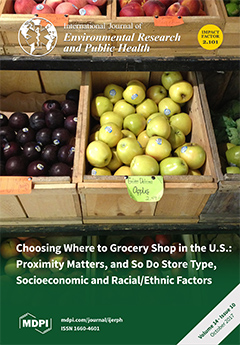Characterization of gene-environment interactions (GEIs) in cancer is limited. We aimed at identifying GEIs in rectal cancer focusing on a relevant biologic process involving the angiogenesis pathway and relevant environmental exposures: cigarette smoking, alcohol consumption, and animal protein intake. We analyzed data from 747 rectal cancer cases and 956 controls from the Diet, Activity and Lifestyle as a Risk Factor for Rectal Cancer study. We applied a 3-step analysis approach: first, we searched for interactions among single nucleotide polymorphisms on the pathway genes; second, we searched for interactions among the genes, both steps using Logic regression; third, we examined the GEIs significant at the 5% level using logistic regression for cancer risk and Cox proportional hazards models for survival. Permutation-based test was used for multiple testing adjustment. We identified 8 significant GEIs associated with risk among 6 genes adjusting for multiple testing:
TNF (OR = 1.85, 95% CI: 1.10, 3.11),
TLR4 (OR = 2.34, 95% CI: 1.38, 3.98), and
EGR2 (OR = 2.23, 95% CI: 1.04, 4.78) with smoking;
IGF1R (OR = 1.69, 95% CI: 1.04, 2.72),
TLR4 (OR = 2.10, 95% CI: 1.22, 3.60) and
EGR2 (OR = 2.12, 95% CI: 1.01, 4.46) with alcohol; and
PDGFB (OR = 1.75, 95% CI: 1.04, 2.92) and
MMP1 (OR = 2.44, 95% CI: 1.24, 4.81) with protein. Five GEIs were associated with survival at the 5% significance level but not after multiple testing adjustment:
CXCR1 (HR = 2.06, 95% CI: 1.13, 3.75) with smoking; and
KDR (HR = 4.36, 95% CI: 1.62, 11.73),
TLR2 (HR = 9.06, 95% CI: 1.14, 72.11),
EGR2 (HR = 2.45, 95% CI: 1.42, 4.22), and
EGFR (HR = 6.33, 95% CI: 1.95, 20.54) with protein. GEIs between angiogenesis genes and smoking, alcohol, and animal protein impact rectal cancer risk. Our results support the importance of considering the biologic hypothesis to characterize GEIs associated with cancer outcomes.
Full article





